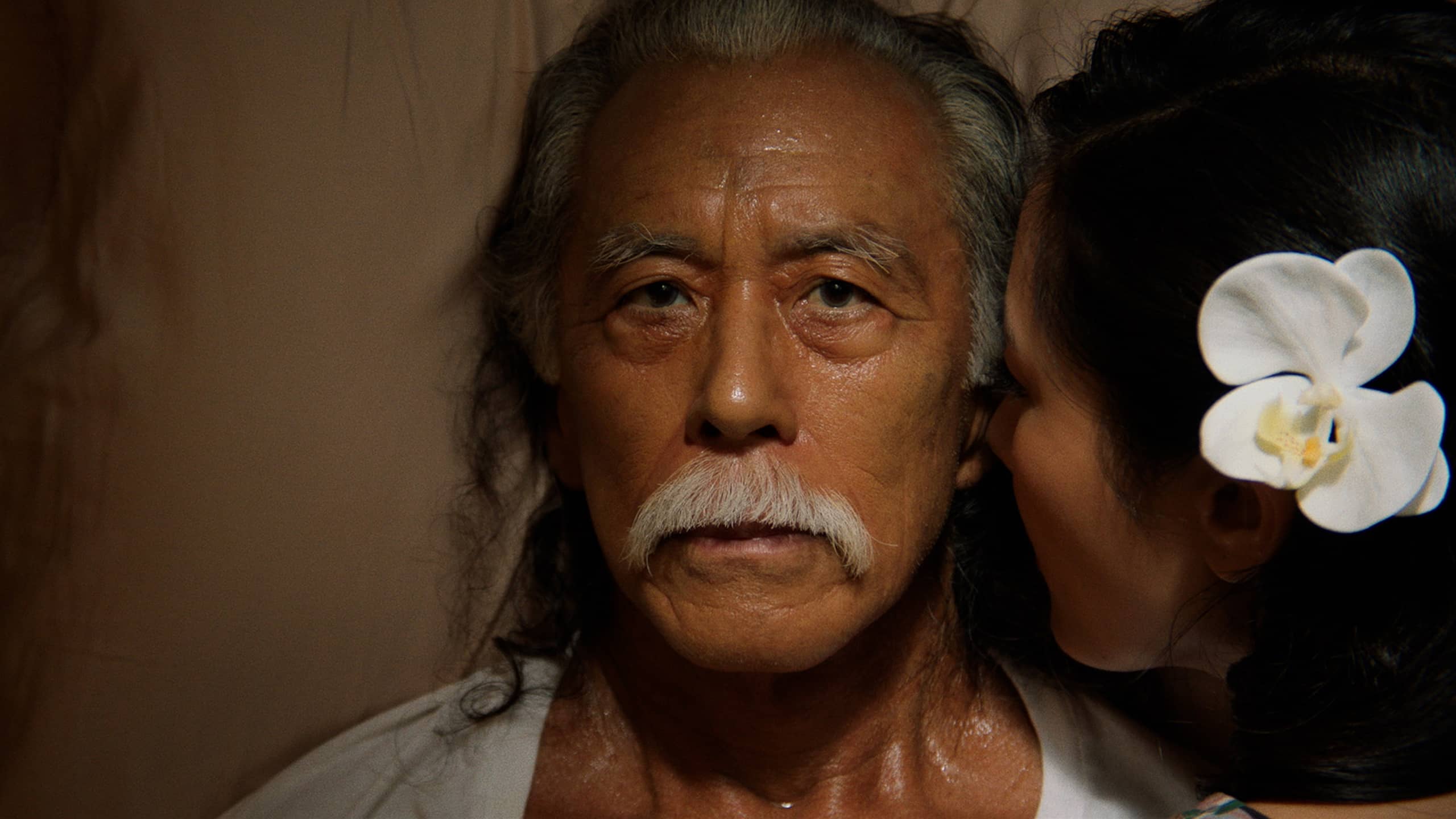Photo courtesy of Flies Collective
Author: Marisa Reyes-Pacheco
As a new year rolls in, so do the seemingly endless films. I was wondering what would take Parasite’s (dir. Bong Joon Ho) place as the film I talk to everyone I know about for months on end until they get tired of me, and Christopher Makoto Yogi’s directorial and screenwriting debut: I Was A Simple Man definitely fits that role. I was able to see a private screening of the film and attend an after screening Q&A with Chris Yogi himself at the 2021 Sundance Film Festival, which was digital this year due to the ongoing COVID-19 pandemic, and I was excited to discover a new filmmaker to look out for in the future.
The film’s protagonist is an old man named Masao Matsuyoshi (Steve Iwamoto). Masao is a Japanese native to the beautiful island of Hawaii. And the film not only explores his not so simple life and relationship with those around him, but his relationship to his nationality and the disconnect between what his father considered “home,” their origin country of Japan. Masao’s loyalty is to the home he has always known, Hawaii. There is some archival footage of Hawaii during the period it gained its statehood, which interestingly enough, was not a happy memory for Masao and his family. The disconnect between the joy of this celebration compared to the grief they felt due to their wife and mother, Grace (Constance Wu)’s death on the same day was immense; feeling unfathomable pain on what is supposed to be one of the most prideful days of your life, another very complicated situation to live through and deal with. Through this exploration of finding home, Masao is also challenged to find himself as he reflects on his life during his process of dying, which is not so simple. While watching, it is an easy assumption for the audience to make that Masao is just an old man, living a quiet, comfortable life in solitude in the gorgeous land of Hawaii. Its slow, easy pace at the beginning of the film lets the audience get comfortable in this beautiful world around them, but this is not simply an ode to Hawaii or a declaration of loyalty to Japan. As Masao gradually becomes more sick and frail throughout the film, his relationship with his adult children and his wife is revealed and is ultimately one of the greatest obstacles he must face and come to terms with before his death.
The first time the audience is allowed to see Masao happy and social is when his adult children and his grandchildren come to visit from the mainland states to celebrate his birthday. The scene is happy and bright, showcasing incredible shots of the Hawaiian sunsets and different landscapes. When dusk falls and his family leaves, the film takes a sharp turn and fully embraces the darkness. Masao is once again alone in his quiet world. The way the film is able to capture the dread of loneliness and its prominence when the darkness is prevalent is captivating. In such a beautiful place in the home where he raised his family with his beloved wife, he is so alone and closed off from the outside world. It is in the darkness that the horror elements director Yogi incorporated into the film really begin to take place, and transform this ordinary story of an old, dying man into the other side: a ghost story, of the woman who brought him so much life and her acceptance of the afterlife. The use of lighting and sound, especially when you’re listening on a projector, alters the once peaceful, serene world into an eerie off-reality that leads Masao to question his own sanity. It is evident that Masao’s health is declining, and he begins to see the ghost of his wife Grace (Constance Wu), who accompanies him on his journey through his health struggle until his final moments. His adult daughter begins to care for him, who questions her loyalty to her father due to his lack of presence in the lives of his children after his wife’s death. This was something I thought was essential to telling the story of Masao and honoring his not so simple life, focusing on the pain he caused his children. I lost my mother when I was young, and as a first generation child to an immigrant father, I understood this disconnect between Masao and his children early on. Masao clearly loved having his children around, but wasted so much time in fear of failing as a father that he never really got to try. This was one of Christopher Yogi’s most prominent points as to why Masao was not just this quiet, reserved man tending to his garden every morning; he was a man who possessed immense amounts of pain, regret, and feelings he could not understand and did not know where to place. While Masao may have been old and frail, he was not ready to leave his life behind, and the immense fear that Yogi was able to create in the eyes of the audience to explore this is unlike any other I have seen. Even from his hospice bed, even when he is calling his grandson the wrong name, even when he is not speaking, the fear of the unknown is always looming for Masao.
I could go on and on about why I loved I Was A Simple Man and how “Dying isn’t so simple, is it?” but it is a film that one needs to see for themselves. I am biased, as I have a strong emotional attachment to the contents within this film, but I also think that that allows for me to give an openly honest review of it: this film allowed me to see how one of the most raw, confusing and transformational periods of one’s life, like death, could be portrayed so honestly in filmmaking. As someone who is usually drawn to horror, I have seen a lot of portrayals of death and the circumstances around it, but this is the most connected and real I have felt while watching it as a daughter. As not being directly linked to the protagonist and not connecting to him like I have most characters, I was able to better understand things about myself and my own family, even if we are obviously different. Most importantly, by getting to directly ask Christopher Yogi how the process of making this film allowed for him to grow in his own journey of mourning and navigating the implications of grief, he gave me honest insight into how his first draft was a much darker film than the one that was accepted to Sundance. It took five years for him to develop this film, and Yogi mentioned how the film gradually changed as he did personally, along with his feelings towards death and grief, as he had lost his father, uncle, and grandfather in close proximity to one another. The film’s title came from the phrase he constantly heard repeated at his grandfather’s funeral: “He was such a simple man…” which bothered him, as he did not think that was a fair statement at all. One of the things I will remember forever from our conversation was Yogi discussing how he used something he loved to see what would happen in order to see the light and deal with it honestly.
I think I Was A Simple Man was exactly what Christopher Yogi set out to achieve as a raw, honest and not conventionally accepted way of discussing and perceiving the process of death and how it impacts the loved ones surrounding that person. I am thankful I was able to see this film, as it is now one of my favorites, and I am immensely thankful to screenwriter and director Christopher Yogi for giving me insight into the process of making the film, and his own personal account of how the grieving process has been for him.
Marisa Reyes-Pacheco | dying isn’t simple, is it? | KXSU Senior Arts Editor

